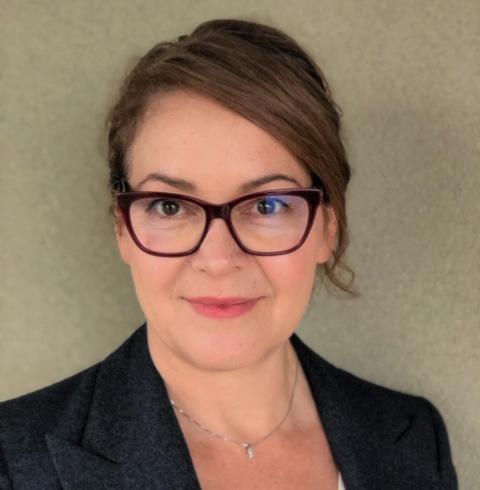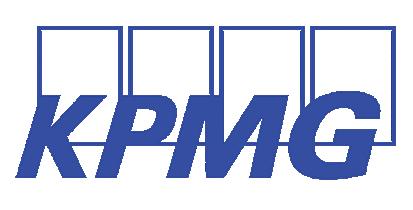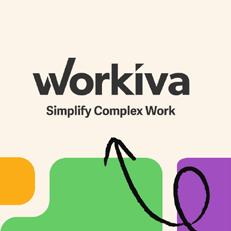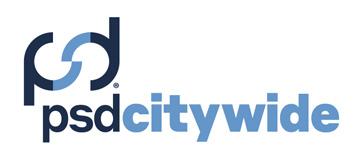Dollars
Online Forum as a Tool
to

& Sense Perspective
AROs
Natural Assets Economic Update: Nearing the End Issue #120 • september 2022
in this issue
President’s Message 2
Executive Director’s Message 4
GfOABC 2022 Boot camp 6
Introducing … Stephanie Kast 7

GFOABC Online Forum 8
MFA’s Corner 10
Remote Work Benefits That Should Not Be Overlooked 11
Nearing the End 13
Digital Transformation in the Public Sector 14
The Effect of Rising Inflation on Commercial Property Insurance Premiums 16
“Think Differently Than You Think”: Navigating the Future of Work 17
Subdivision Bonds – Alternative Security to Letters of Credit 18
Climate Resiliency Grants Program 20
Asset Retirement Obligations to Natural Assets – The Spectrum of Environmental Reporting 22
Quarterly Question 23
Celebrating 30 Years in Local Government 24
Collectors’ Corner 26
Enterprise Case Study 27
Quarterly Question Results 28
Thank You Exhibitors 29
Thank You Sponsors 30
president’s message
As we welcome September and reflect on the last few months, I find myself wondering if others noticed that this summer did not have the usual pause that comes after our busy season. This is typically a time to con tinue with projects such as policy development and the implementation of new accounting standards or new soft ware. This summer did not allow for the time and space to continue with these important projects. As discussed with many colleagues at this year’s Next Level Finance Conference, many municipalities are struggling to achieve priorities due to limited staffing resources, increased costs and competing priorities.
GFOABC, however, has been for tunate to welcome two new staff members in 2022 into the roles of Manager, Member Services & Communications, and Manager, Professional Development & Education. This has allowed us to continue to offer and develop relevant programming for our membership. In August we success fully held the 15 th annual Finance Officer’s Boot Camp in Victoria BC.
Thirty-seven students successfully completed the program this year. I want to extend a huge thank you to the many volunteers and faculty that support Boot Camp every year. This success would not have been possible without the coordination and hard work of our dedi cated staff Kala, Jason and Stephanie.
In past years I have presented on the Role of the Finance Officer in the opening session of Boot Camp. This year I took a pause as I transitioned into my role as Chief Administrative Officer (CAO) for the District of Tofino. It is of great comfort to me that I take the knowledge I gained as Chief Financial Officer and the relationships I have developed with our membership into this new role. There isn’t a more applicable profes sional background to have in facing the economic challenges of today as CAO.
As we all head into our next financial planning cycle, Finance Officers are having to balance a high level of risk in our plans as inflation continues to grow, impact ing our communities. Municipal programs, plans and projects
2 | GFOABC.CA
continue to be affected as market pricing continues to exceed bud geted estimates. Our financial plans will continue to carry risk to reve nues and cash flows which we will need to closely monitor and manage.
This is a time where we rely on important programs and plans such as asset management plans and development cost charges. It is also a time to revisit these plans to examine how the current market will impact our investments. Communication with our ratepay ers is essential during this time and affordability continues to be at the forefront of our minds as we endeavor to meet our priorities.
In addition to reaching out to your community, keep reaching out to your networks through the GFOABC forum. Let’s share our knowledge and lessons learned during these difficult economic times. Let’s not forget, however, to continue to share and celebrate our successes!
I wish you all the best as you enter the final quarter of 2022.
Nyla Attiana, GFOABC President
Board of Directors

President Nyla Attiana Vice President Rianna Lachance Secretary-Treasurer Talitha Soldera Past President Lorraine Coughlin
Directors at Large
Julia Aspinall, City of Vancouver Jeannue Bradburne, Nanaimo Regional District Shelley Hah, MFABC Kathy Humphrey, City of Kamloops
Elio Iorio, District of North Vancouver Lenora Lee, KPMG
Staff
Kala Harris, Executive Director Jason Tollman, Manager, Member Services & Communications Stephanie Kast, Manager, Professional Development & Education Gerilee McBride, Graphic Design
SEPTEMBER 2022 • DOLLARS & SENSE PERSPECTIVE | 3
executive director’s message
In-Person Boot Camp Triumphantly Returns!
Following two years in a row of virtual Boot Camp, this year marked the return to an in-person program. This year’s boot camp continued to attract new and not-so-new local gov ernment finance professionals from across the province. We are seeing increas ing numbers of attendees from the lower mainland municipalities as well as regional districts.
We also welcomed some new faces to the faculty line-up this year, Dawn Christensen from the Town of View Royal, Sambo Eam from the Capital Regional District, Jedha Holmes from the City of Parksville, Tina Perreault from the Sunshine Coast Regional District, and Troy Ziegler from the District of Central Saanich.
Like many sectors, there is an increasing amount of turnover within local government finance, this turnover may be why we continue to see high demand for virtual or in-person Boot Camp. One vacancy, for whatever reason, retirement or move of a finance officer, creates a cascading effect that reaches across regions and to some extent the entire province. While this was happening before the pan demic, the pandemic coupled with an impending municipal election is no doubt hastening the rate of turnover.
For these reasons, Boot Camp has never been more relevant. It provides a jumping-off point for establishing not only a solid foundation in local government finance, but also establishing a network of colleagues whom they can reach out to for support—support throughout the long, hot, and often unrelenting days of Boot Camp, but more importantly support through their first budget, first LGDE, first municipal election, etc., and indeed throughout their careers.
This year’s program included the introduction of our newly developed Leadership Competency
Framework. This framework was developed over the past year with financial support from the Municipal Finance Authority of BC through our Strategic Education Alliance Partnership. The framework was developed with input from local government finance professionals from across BC, including the cities of Coquitlam, Cranbrook, Fort St. John, Powell River, Kelowna, Kimberley, Prince George, and Victoria. Its purpose is to provide a tool for members to identify and pursue a path to strategic financial leadership.
Over the course of five days, we watched each team transition quickly from introductions to competing for the coveted Golden Boot. It was so refreshing to be back in person and great to see attendees engaging with each other. By the end of day five, what we hope is that every one leaves with a solid foundation in local government finance, or at least knows what they don’t know, know who they can reach out to for help and where to find the resources to help them navigate the legislative frame work that guides local government finance.
Congratulations to the Orange Team, winners of the coveted Golden Boot, and this year’s Deb Humphrey Scholarship Award winner, Pamela Anderson from the Village of Burns Lake.
Thank you to the faculty and guest presenters, who shared their knowledge and expertise with this year’s boot camp class. And lastly, thank you to the GFOABC team, Jason Tollman, Manager of Member Services and Communications, and Stephanie Kast, Manager of Professional Development & Education, for helping make boot camp a success!
Kala Harris, Executive Director

4 | GFOABC.CA


 2022 Boot Camp Group Photo
2022 Boot Camp Group Photo
SEPTEMBER 2022 • DOLLARS & SENSE PERSPECTIVE | 5
GfOABC 2022 Boot camp
for the finance team. And we had the honour of learning that information from our peers that have been devel oping their expertise in the subject over many years and through various positions. Finance officers from Regional Districts and municipalities of all sizes, audi tors, representatives from our supporting organizations and provincial ministries; all volunteered to be a part of our development as municipal finance professionals.
The Boot Camp is themed, with the participants organized into teams. The teams were given a colour, which was more fun than I would have guessed. This year’s theme was baseball. Because I’m writing this, I’ll take the liberty of giving a plug to “Good Vibes Only” or Team Yellow; although the points don’t matter, we were up there on the leaderboard (top 6 I believe.)
It was just like family feud, when a contestant pushes the button before the question is even finished. It was for points, so I pushed the button. Now I’m sitting here writing an article about the GFOABC 2022 Boot Camp. This is actually my second article, the first one being rejected on grounds of incoherent blather. This one won’t be much better, I promise.
I was somewhat reluctant to go. I heard myself saying things like “I like to learn by reading and trying things out on my own,” or “what could I offer to a group of people who’ve been doing this work for years, while I’ve only just begun?” and “what could they offer me and my organization that isn’t already in the CC?” Well…
The Boot Camp is an introduction to the role and responsibilities of the finance officer. It offered us a wealth of reference material that is literally a playbook

Things started out with a description of the partic ipants; it turned out I wasn’t alone. Many of us identi fied as being quite new to municipal finance. Many from smaller local governments too. Simply an amazing mix of people.
They told us that Boot Camp participants used to do push ups if they showed up late. We were more fortu nate. Some of the hottest days of the summer, in a con ference room that I’m certain was designed to double the outdoor temperature. Long days, and work into the evenings, but always time to mingle and learn about each other.
We were exposed to people and ideas that will frame our work and guide our decisions.
It’s no coincidence that we were grouped in teams and that the exercises and activities required everyone’s participation. Listening and learning about the experi ences of other finance officers, hearing their thoughts and ideas and thinking about how they might be applied
6 | GFOABC.CA
in our own local government. Being courageous enough to ask tough questions (the scary ones that show how much we still have to learn) and empathic enough to appreciate the experiences others are willing to share.
We might be able to do it alone, but what the Boot Camp showed me is that I don’t have to. Indeed, that if I were to rely on myself and not collaborate with all my peers who so willingly offer their experience, I would be doing a disservice to my local government, the people I work with, and the people I serve.
Not sure how to end this, espe cially with so much gratitude for the people who organized the Boot Camp, for the speakers, and for my 2022 cohort. Oh yes, I’ve got it. Thank you.
Introducing…
Hello GFOABC Members!
I am the new Manager of Professional Development and Education at GFOABC. It is my responsibility to support you, the members, to create and implement professional development and educa tional opportunities all while encouraging excellence in local government finance. I am both excited and honoured to aid in the creation of programs that empowers BC local governments in financial excellence.
I completed my undergraduate degree in Sport Management at Brock University and decided that I was still hungry for more. I then went on to complete a master’s degree, during which I really honed my critical thinking skills. After the completion of my master’s, I realized I was missing school and went back to complete a post-graduate diploma in Project Management at Humber College. You can say I have a unique background that combines business, education, and project management.
My career has also taken me on quite the journey; I’ve been a research assistant for a Pickleball Ontario Coaching program with Brock’s Centre for Sport Capacity. I provided administra tive support for a Financial Advisor. I was Program Coordinator for the University of Victoria’s Gustavson’s Weekend MBA.
I am looking forward to working with and meeting you all. I have high hopes and expectations for this role and as the great Michael Scott once said “The only time I set the bar low is for limbo. Always keep the bar raised no matter what.”
TREVOR RYHORCHUK joined the Northern Rockies Regional Municipality in March 2022 as Director of Finance. Trevor began his accounting career in public practice on Vancouver Island (preferring auditing over taxation) and has since worked for two territorial governments and a forestry company.

Stephanie Kast, Manager, Professional Development & Education

SEPTEMBER 2022 • DOLLARS & SENSE PERSPECTIVE | 7
gfoabc online forum
mike kennedy, cfo of rossland
Your GFOABC membership comes with a lot of perks.
Discounted pricing on webinars and courses, a year chock full of professional develop ment and networking events like our Annual Conference, Boot Camp and Fall PD. While all those are great, the most powerful tool at your disposal is access to our online forum.
Through the Online Forum, local govern ment finance professionals can access an archive of information going back to 2016, ask or answer ques tions to and from fellow finance professionals, and share pertinent documents.
To understand the true value of the forum, we reached out to several GFOABC members who have made visiting and engaging with the forum a part of their day-to-day and will be sharing their takes over the course of the next four newsletters.
Up first is Mike Kennedy, the CFO of Rossland and a self-described ‘recovering auditor’. He’s been in the role since June 2021

Here are his answers to a few of our questions:
WHY DO YOU USE THE ONLINE FORUM?
I see the forum as a tool to minimize and manage the risks that come with my role as CFO. It’s especially helpful during ‘busy seasons’ like HOG time, and when an issue is impacting multiple municipalities like the VADIM price increase. The fact that discussions and information is archived on the forum is also helpful. It’s a huge time saver when I’m trying to track down informa tion on policies, procedures and templates.
HOW OFTEN DO YOU LOG ON TO THE ONLINE FORUM?
I’ll typically log on two to three times a week. I like to check in on what issues my colleagues are running into or seeing what ideas they may have when it comes to answering or solving a particular problem. When it comes to tackling issues associated with my role as CFO, the forum has become an indispensable resource.
HOW DO YOU THINK EXPANDED ENGAGEMENT ON THE ONLINE FORUM AMONG GFOABC MEMBERS CAN HELP THEM IN THEIR DAY TO DAY?
As the CFO of a smaller municipality, it’s really helpful to be in the loop on what’s going on around the munic ipal finance world, particularly as it relates to trouble shooting or planning for any issues that are coming up on the horizon. The archive of information is super helpful when I need to navigate a policy or procedure, find a template and anything else I need. The more of us adding information to that archive, the easier it makes it for any of us to efficiently solve a problem or make sure we’re doing things by the book.
WHAT ARE SOME OF YOUR PERSONAL BEST PRACTICES WHEN IT COMES TO ENGAGING ON THE FORUM?
I always make sure to post or request others post per tinent documents directly in the forum (rather than sending them via email or DM). As long as there aren’t any privacy issues, it’s great to add to the archive of information and have access to those documents down the road. Something I also try to keep in mind is to have
8 | GFOABC.CA
some fun on there! Of course, it’s a forum for finance professionals and ultimately, we’re all there to do our jobs better, but I find injecting a little bit of appropriate humour like a meme or GIF keeps things light and can break up the day. We’ve all got enough to worry about through the course of our workdays!
A big thank you to Mike for agreeing to take part in our survey. His contribution to the forum has been invaluable for fellow members, and he’s a great example of how participating and collaborating on the forum can benefit not just individuals, but the entire GFOABC community.
Stay tuned for December’s newsletter where we’ll hear from another engaged forum user.

SEPTEMBER 2022 • DOLLARS & SENSE PERSPECTIVE | 9
MFA’s Corner
Why Does MFA Use Actuarials Again? Seems Complicated!
During my presentation covering long-term debt at GFOA’s Boot Camp last month, I received a great question from one of the attendees: Why does MFA use actuarials instead of just having a simple declining balance repayment schedule like you would get at the bank? It seems so complicated!
As a review, MFA raises monies to fund long-term loans by issuing debentures in the capital markets. These are typically bullet debentures, meaning the principal will be repaid to the bondholders at maturity and inter est will be paid semi-annually. Local governments are required to make 2 semi-annual interest payments and one annual principal payment. Interest payments are materially a flow through to the investors. With bond holders not requiring principal repayment till maturity and MFA collecting principal annually, it gives the oppor tunity for MFA to invest those principal payments to the credit of our Members.

The actuarial is the anticipated earnings on these principal payments and is first recognized one year after the first principal payment and recognized annually until loan expiry. These earnings reduce the outstanding loan obligation and as such borrowers may write down the balance of their loan annually by this amount. Over the life of the loan, the sum of principal payments and actuarial amounts equal the gross amount of the loan.
For the last 50 years, MFA has employed an actuarial credit that utilized the same rate regardless of the term of the loan the client selected (5 through 30 years). At the time of writing, it is expected that the actuarial rate for the fall issue will be 3.25%.
Having the same rate assigned to all terms has inher ently caused the 5-, 10- and 15-year loan terms to receive an actuarial credit that is above what is earned over these loan periods, relative to longer-dated loan terms
(20, 25, and 30 years). The longer-term loans subsidized a higher rate paid to shorter-dated loan terms and as a result, received less than deserved.
In 2023, MFA will set different actuarial rates by loan term meaning 5-year loans, for example, will receive a much lower rate of actuarial credit over its life relative to a 30-year loan. Naturally, you would expect to earn less over 5 years versus 30 years.
This will allow MFA to set a rate more accurately reflective of each term’s likely earnings, keep loan lending spreads above our cost of funds minimal, reduce inter-period actuarial rate fluctuations and reduce endof-term surpluses to ensure cash is kept in the hands of local government over the loan terms, not paid out after a loan term ends which can be 30 years.

The actuarials for existing issues will not be affected by this change and will continue to be evaluated indi vidually. If they require prospective adjustment, partici pants in those issues will be notified individually. Please note that the MFA reserves the right to adjust actuarials at any time, but in practice, we try to limit changes to refinancing dates.
SHELLEY HAHN is the Chief Services Officer with the Municipal Finance Authority of British Columbia (MFA) and joined the Authority in 1997. She directs the operations of all MFA’s short-term lending and investment products and oversees all requests and approvals for financing. Shelley is also responsible for all legal, legisla tive and securities compliance within the organization. Shelley has been on the Board of the Government Finance Officers Association of British Columbia (GFOA) since 2005 and is very active in developing educational opportunities for MFA’s clients and GFOA Members.
10 | GFOABC.CA
Remote Work Benefits That Should Not Be Overlooked
We work with finance and budget departments in organizations of all sizes. Even in large organiza tions, these teams tend to be small (and getting smaller). The best approach for small groups is to enable them to do more with less, do it better, and do it faster. It can be challenging to think of creative ways to drive these effi ciency gains.
As a small company, we feel this pressure too. The skills we require of our professionals are hard to find, develop, and maintain. It’s a unique combination of accounting, technology, and a deep understanding of finance department business processes, earned by decades of experience working IN public sector finance.
We are always looking for ways to increase effi ciency. Nearly a decade ago, we implemented a remote work strategy for our company with this aim in mind. We invested heavily in technology to enable it, such as:
• all meetings and training sessions are conducted online and recorded,
• we host the recordings of our meetings/training so clients can play them back at will,
• we use transcription services to facilitate easy searching of recorded meetings,
• we use online project management tools to keep our clients apprised of project status at all times,
• all our systems (servers, phones, etc.) are remotely accessible.
Today we are a 100% remote work organization, and our team is spread out across North America. Here are four big benefits to working remotely:
1)FLEXIBILITY
Benefits for our Team: From spending a month at the beach in Mexico or a few weeks in Japan, temporarily
relocating does not necessarily mean you are eating into your vacation. If you have good office space and an excellent internet connection, the world is your oyster. We hear from our teammates regularly how much they appreciate the flexibility.
Benefits for our Clients: Being remotely enabled means we can quickly jump from helping one client in Florida at 9 am to one in Oregon at 11 am and then provide 4 hours of training to clients from Ontario in the afternoon.
2)EFFICIENCY
Every organization cares about maximizing output. We REALLY care. It is what we help our clients do every day. Even though there’s a lot of evidence for increased general productivity, with remote work, consider the time savings from commuting alone.
The average commute time to the office in Canada and the US is about 26 minutes. You could reasonably expect similar results on the trip home. There are better things you could be doing with 52 minutes a day (working out, walking the dog, or playing with your kids).
3)HAPPINESS

Think of the stress and frustration that traffic causes: rushing to work or rushing home to make dinner or take the kids to after-school sports.
There can also be challenges related to remote work. The primary ones are burnout and loneliness. For us, the loneliness component is partially mitigated as we are working together on projects for clients con tinuously. We have a full staff meeting online weekly with webcams to catch up, discuss requirements and deadlines, and provide training, which results in lots of
SEPTEMBER 2022 • DOLLARS & SENSE PERSPECTIVE | 11
human interaction. Finally, we attend, speak, and teach at a dozen or more conferences per year, which gives us a chance to spend in-person time with clients and other teammates.
4)RECRUITMENT
If we were a traditional, office-locked company, we would recruit in our city and be largely constrained by the local talent pool. Or we would need to convince a candidate to relocate. Unlike some of our competitors, we can avoid these twin constraints. We have the luxury of drawing from a much larger pool (the world) and do not need to upset anyone’s life with relocation.
We understood that to grow and thrive, we needed to think differently. Remote work was one of our strat egies, and it continues to provide exceptional ROI for us, enabling us to stay far ahead of the competition and provide the best service to our clients.
JAMIE BLACK is President of F.H. Black & Company Incorporated. For over 25 years, he has consulted and trained finance officers, auditors & accountants in government, higher education, and corporations throughout Canada and the U.S. His work focuses on increasing finance department efficiency and effectiveness through the implemen tation of technology and improved business processes.

12 | GFOABC.CA
Pooled High Interest Savings Account for MFA of BC Members Contact invest@mfa.bc.ca for more information Enjoy liquidity on demand and interest earned daily and paid monthly. Trim: 3.6x9.5” Colours: CMYK - 300dpi First Draft: May4, 2022 Bleed: 0.125 Deadline: May 6, 2022 Safety: n/a Designer: Fabio Prod: n/a
The big questions in markets over the last few months have revolved around the number of interest rate increases that will be required to tame inflation and whether or not those increases will trigger a recession. Inflation has been, and continues to be, wildly above most global central banks’ targets. This is also true in Canada. Central banks, which are the designated infla tion fighters in advanced economies, have in many cases responded aggressively (and belatedly) to inflation pressures.
The Bank of Canada’s policy rate is currently 3.25%. It was a mere 0.25% at the beginning of the year. This very large and rapid increase in policy rates reflects the Bank of Canada’s concern about the inflation outlook. Inflation is, after all, roughly 4 times what their official target is. We believe, however, that the Bank of Canada is nearing the end of this tightening cycle. Another 50-basis point move is expected in October, bringing the Bank’s policy rate to 3.75%.
At that policy rate, we expect inflation will grad ually return to the 2% target over the next 18 months. Several factors point in this direction. It is now clear that many of the supply constraints impacting input and final goods prices are abating. This is not yet evident in some sectors, like the auto industry, but there is evi dence pointing this broadly across the global economy. In addition, commodity prices have come off their highs, as clearly seen in the price of oil and gasoline. These factors suggest that the drivers of inflation over the last 18 months are starting to fade somewhat. It will never theless take time for inflation to return to the 2% target as other factors will push inflation up, offsetting some of the downward momentum from these past factors. A few stand out: food prices continue to remain elevated and are likely to remain so, service prices remain under pressure owing to capacity constraints, wage growth is
Nearing the End
accelerating given the incredible strength of the labour market, and rents are rising rapidly. On balance, we remain of the view that inflation has likely peaked in Canada and that a few more interest rate increases are required to put inflation on a clear path to 2%. We have to admit, however, that inflation has found ways to sur prise to the upside in almost every single reading for almost the last 2 years. So, while there are good reasons to believe inflation will fade, the risks of positive sur prises on inflation likely outweigh the risk of welcome downward shocks to the inflation outlook.
JEAN-FRANÇOIS PERRAULT joined Scotiabank in 2015 as Senior Vice-President and Chief Economist. He leads a team of Economists to support Scotiabank’s domes tic and international business lines and clients from retail to capital markets, providing Scotiabank’s senior executives, business lines and customers with perspectives, insights and forecasts on economic, finan cial market and policy developments. Prior to joining Scotiabank, Jean-François held prominent roles with the federal government, the Bank of Canada, the International Monetary Fund and the World Bank.


SEPTEMBER 2022 • DOLLARS & SENSE PERSPECTIVE | 13
Digital Transformation in the Public Sector

The pandemic has sparked and accelerated digital innovation across governments worldwide. The question now is how to scale these efforts and ensure governments remain trusted, agile, and resilient provid ers of citizen services adding value to the public. We live in a world where new technologies are adopted within days, weeks, and months, not years, as they were in the past.
2022 continues to bring digital disruption across municipalities internally, with staff, and externally with growing citizen engagement. Major technology trends of 2022 in municipalities requires delivery of right-scoped value, serve “the everything citizen” in person and digi tally, flexible technology built on data foundation, crafted around an adaptable workforce and delivery of anyscale operations.
As an early response to the pandemic, governments saw an exponential increase in digitalization. This trend continues to accelerate through 2022. We see digital dis ruption at work every day through online services, VGIS, parking apps, smart garbage cans, and many others.
Digital disruption also brings a set of challenges that are top of mind for all municipalities. Challenges such as budgetary constraints, community growth and demo graphic changes, increasing citizen engagement, social media pressures, and hiring new generations of skilled employees make it difficult to prioritize and make mean ingful progress.
Attraction of junior staff and retention of senior staff are fast becoming some of the top challenges as hybrid work models and modernization are challenging the norm and driving digital transformation. Hybrid work, skilled employees, healthy workforce and diversity and inclusion are top Human Resources priorities for 2022. They align well with the new trends that are emerging for HR practitioners. Power human skills and digital are forcing municipalities to address and adapt organiza tional structures, investing in mentoring and learning programs for their employees.
Wellness and hybrid work are allowing organizations to evaluate and adjust the organization culture, building an environment that will bring diversity and inclusion to the workplace, capitalizing on different experiences and perspectives, infusing different thinking and innovation. Injecting flexibility and humanity into Employee Value Proposition helps attract a diverse and more digitally savvy workforce.
This, however, is only answering one side of digital transformation. Insufficient funds are a major hurdle for

14 | GFOABC.CA
the enablement of new technologies and growing citizen needs.
To make progress in transforming public services, municipalities need to align their leadership goals with public expectations and in turn raise the much needed funds.

Establishing strong KPIs that are providing combined success measures of people, process, and technology are important to prove the value of digital government and transformation.
With so many technologies available today, it’s only natural the question on everyone’s mind is “Where do we begin?”. Start with developing a Digital Strategy aligned with Council’s vision and objectives. Throughout the process, you will be able to assess the digital matu rity of your organization, gaining insights and identi fying the required skills, defining a roadmap for your digital transformation journey, focused on quick wins to build momentum and allowing you to iterate, while still aligning with longer term strategic initiatives.
MATT AMBROSE is a Partner in BDO’s Toronto office, with over 23 years of professional experience providing management and tech nology consulting services to private com panies and mid-enterprise. Matt is a leader in transformation, value creation, and emerging technologies with +23 years’ cross industry experience deliver ing process improvement, business model development, due dil igence, function strategy and design, outsourcing, governance and risk management. He has a MBA from the Richard Ivey School of Business, CMC and PMP designations, and a variety of technical certifications.

SEPTEMBER 2022 • DOLLARS & SENSE PERSPECTIVE | 15
The Effect of Rising Inflation on Commercial Property Insurance Premiums
With inflation being at an all time high since the early 80s, increased consumer demand, labour shortages and challenges to supply chain, higher prices are almost everywhere we look. Canadian construction costs are no exception to this and have already been on a steady incline since the beginning of the COVID-19 pandemic. With budget season in full swing, now more than ever local governments should be considering the affects of inflation and rising construction costs on their insurance premiums.
Most local governments purchase property insurance policies that provide them with replacement cost cover age for their buildings. In exchange for this coverage, the expectation is that local governments give their insur ance providers values that accurately reflect the replace ment cost of their buildings in the event they suffer a claim that results in the total replacement or rebuild. These values are then applied against underwriting rates to calculate your insurance premiums. Because of the escalating cost of materials, local governments should be considering rising inflation for not just new projects, but for their existing buildings, as they directly impact how much your local government pays for its property insurance.
While not all commercial property insurance word ings are created equally, they all rely on insureds to provide accurate valuations for their buildings. Some insurers provide blanket coverage, meaning that a single coverage limit, usually based on the total value of a prop erty schedule, applies to all property losses. Other poli cies have a co-insurance clause that requires your local government to insure buildings to a minimum percent age of their replacement cost value, usually 90%. In this scenario, if a loss exceeds 90% of the value you declared for a building, it means your local government would be

out of pocket for the loss above that amount, resulting in a significant cost burden for your local government.
Here are a few things local governments can do to help budget for potential premium increases due to rising inflation:
1. Review your insurance early. Check to see if your policy has any clauses that limit the amount payable in the event of a loss, such as co-insurance, and review your statement of values more than once a year.
2. Get an updated appraisal. Local government appraisal cycles vary. When we were in a soft insurance market with a predictable rate of inflation, many insurance providers were willing to accept appraisals up to five years old. Today those values could be significantly out of date, even if you’ve been adding an inflationary factor each year on renewal. If it’s been a while since your last appraisal, consider getting one sooner rather than later. Your insurance provider can help you come up with a plan for appraisals.
3. Prioritize Risk Management . Claims experience also factors into how much you pay for insurance. By prioritizing risk management, you can reduce the likelihood of claims and help control premiums. MIABC members can reach out to us at AskUsAnything@miabc.org to access a variety of tools and services to assist with this.
MARINA SEN-PARTRIDGE is the Manager of Member Engagement and a licensed insur ance broker at the MIABC. She believes her work goes far beyond the placement of an insurance policy. She’s passionate about con necting local governments with the tools they need to meet their ever-changing needs and focus on what’s most important to them – serving their communities.

16 | GFOABC.CA
“Think Differently Than You Think”: Navigating the Future of Work
This year’s GFOABC conference was a wonderful chance to reconnect with colleagues and tackle some tough topics. My presentation on the future of work centered on organizational employee value prop ositions (EVPs) and their importance on attracting and retaining talent. Here are some takeaways that I hope will serve as critical reminders as you work to develop or enhance your own EVPs.
First of all, it’s important to acknowledge that “employee value proposition” isn’t some new age mumbo jumbo: research clearly shows that effective EVPs elevate the employee experience to levels comparable with customer experience—which has long been a key benchmark of organizational success. But it is a fresh way of understanding the meaning and value of work, and it means that things like diversity, equity, and inclusion (DEI) is everyone’s responsibility.
In other words, today’s successful workplaces not only offer flexibility, personal growth and well-being—they’re also highly purpose-driven. These traits are becoming basic table stakes for any employer, as are their positions on environmental, social and governance (ESG) matters. It’s of no surprise, then, that the future of work is focused on the employer-employee social contract. In this light, your EVP will determine whether top talent wants to join your organization in the first place, the extent to which they will perform at their best, and whether they will stay with you.
It’s a qualitative shift, really. Instead of counting hours, you’re focusing on goals. Because there’s some thing else we have to face: employees are unwilling to return to the pre-COVID paradigm of vertical and hier archical workplaces. That’s what the “Great Resignation” was all about. Today’s talent wants to operate on shared purpose—the ability not just to grow professionally but
also to have a positive impact on each other and their communities, and even the larger world we all share.
This also means that the focus is no longer wholly on the employee purely as employees. Leaders are under standing that traditional ways of communicating and engaging with their people isn’t working post-COVID. Authority is simply no longer conferred by virtue of a title but rather through the ability to connect genuinely and intentionally around a shared purpose where every one contributes—and not merely according to the strict terms of their job descriptions and the hours they log.
Psychology has come a long way since its nascent beginnings in the late 1800s. One thing we’ve learned is that denying people choice is equivalent to hijacking their amygdala—the brain’s response to a threat. When we lack choice, our ability to interpret information accu rately is shut down and all our modalities are focused on eliminating that threat. Choice, you might say, is everything.
The philosopher Jacques Derrida’s work in psychol ogy encourages us to “think differently than we think.” The bottom line is therefore this: the future of work is about so much more than allowing employees to work from home. It’s about working with your people to build that future together.
DR. HILARY CURRY leads the People & Change Practice for KPMG in Vancouver. For over 20 years, she has been helping orga nizations navigate their people and organi zation challenges. Her approach to working with clients is based on her extensive experience working internally and she brings a common-sense cultural lens to real-world challenges.


SEPTEMBER 2022 • DOLLARS & SENSE PERSPECTIVE | 17
Subdivision Bonds – Alternative Security to Letters of Credit
Contract bonds are a well known and utilized finan cial security instrument for construction proj ects in Canada. A number of jurisdictions in Canada make it mandatory for contractors to provide bonds for public projects above a certain threshold – Ontario’s new Construction Act of 2018 set the limit at $500,000 while the threshold for B.C.’s Ministry of Transport and Infrastructure is set at $200,000.

Prior to the development of real estate as a precon dition to granting construction permits, government entities will require an owner or developer to post finan cial security to guarantee the completion of designated improvements. These improvements may include gutters, sidewalks, curbs, lighting, sewers and drainage systems. The go-to security for many developers is an irrevoca ble letter of credit which encumbers a portion of their credit facility and is acceptable in all jurisdictions. Subdivision bonds is an alternative form of secu rity widely accepted in the US and several jurisdictions
in Canada. In the 2 years pre-Covid, 3 jurisdictions in B.C. began accepting these bonds from developers with a handful further indicating that they are receptive to them, given uptake by developers in their region. A key difference between subdivision bonds from regular contract performance bonds is that the owner/devel oper (the principal) has to pay the cost of building the bonded improvements rather than the public agency (the obligee).
BENEFITS TO MUNICIPALITIES:
• Demand instrument – a subdivision bond is comparable to a letter of credit, representing a very liquid instrument that provides the municipality with the funds required in case of a claim.
• Customizable – The bond wording can be amended and made suitable for each municipality, providing financial guarantee consistent with the municipality’s servicing agreement.
• Prequalification – Prior to issuance of subdivision bonds, the Surety performs a comprehensive assessment of the developer’s financial strength and source of funds along with their experience and capacity required to successfully complete the project.
• Indemnification – In case of a claim, the surety has recourse to recover all amounts paid under the subdivision bond. This keeps the developer accountable and driven to fulfill its responsibilities to the municipality.
• Encourages Growth – A municipality that accepts subdivision bonds as an alternate form of security indicates to developers the municipality’s innovation and consideration of the developers needs. This in turn drives an increase in development opportunities with no additional risk to the municipality ensuring growth benefits are felt by its communities.

18 | GFOABC.CA
BENEFITS TO DEVELOPERS:
• The bond is an off-balance sheet security which increases working capital significantly at the later stages of development.
• Surety credit is unsecured and does not reduce or tie-up the developer’s source of funding – letters of credit are usually fully collateralized by cash by the end of the project.
• The Surety claim department will work to facilitate a resolution of any problem within the demand window prior to forfeiting the security.

The fundamental aim of surety is to avoid detri mental occurrences through stringent underwriting of a developer’s character, capacity and capital (3 Cs of Surety) before issuing bonds. Municipalities would therefore view subdivision bonds more as an assurance than insurance.
Public procurement for all of Canada.
GILBERT KIMANI, CPA, CA, Associate Vice President – Surety, Aon Construction Services Group, is an advocate for finding win-win bonding solutions for both owners/municipali ties and contactors/developers through pushing innovation and an in depth understanding of risk mitigation. Gilbert holds an Honors (Sustainability in Business)

BBA Degree from Simon Fraser University.
Municipal associations across Canada have partnered to form one of the largest cooperative procurement groups in the country. Representing over 5,000 municipal, public sector, and not-for-profit organizations, Canoe offers more than 50 unique programs with over 200 approved suppliers. All have been tendered on your behalf and are fully trade-compliant.



SEPTEMBER 2022 • DOLLARS & SENSE PERSPECTIVE | 19
Climate Resiliency Grants Program

Environmental Youth Alliance and Strathcona Community Gardens rolling up sleeves to combat climate change with urban wetland in Vancouver’s downtown
In recent years, British Columbia has become all too familiar with the damaging effects of climate change. In 2021, wildfires damaged more than 800,000 hectares of land1. Flooding has also been the source of significant damage prompting community wide evacuations and resulting in extensive damages. In Vancouver’s down town east side, the Environmental Youth Alliance (EYA) and Strathcona Community Gardens are increasing climate resilience through the development of an urban wetland. This particular area of the city has less natural infrastructure than surrounding areas resulting in more frequent flooding.
The devastating effects of climate change can be felt across the country. With extreme weather events occurring more frequently and with greater sever ity, communities must adapt and better prepare them selves to handle the impacts. Municipalities in particular play a critical role in protecting their communities from climate change. With 60% of infrastructure belonging to municipalities, these governing bodies must ensure they are protected to minimize losses and damages. In many instances, partnering with a community organization, not-for-profit or non-governmental organization can be a great benefit in getting climate adaptation strategies off the ground.
As communities grapple with extreme weather, Intact Public Entities (IPE) and the Intact Financial Corporation (IFC) are doubling down on helping people adapt to the impacts of a changing climate. They recently invested in 10 communities across Canada, including Vancouver, to bolster resiliency in areas where climate has the ability to have a negative impact.
With the help of at-risk youth and other commu nity members, the EYA plans to develop a 1.34 hectare greenspace into a freshwater wetland consisting of a pond, marsh, bioswales and a riparian buffer area that will catch and absorb surface run-off. The space will incorporate native plants and will help the commu nity manage and mitigate the impact of more frequent and extreme rain events caused by climate change. The wetland will attenuate the flow of water through the site and will retain water in its man-made pond.
Work will be completed by 240 youth experiencing poverty and other barriers led by EYA facilitators as well as 160 community volunteers in organized work parties. This community involvement will increase capacity to contribute to future projects that support climate resil ience. The project is projected to begin in the fall with an anticipated end date of spring 2024.
1 https://www.canadianunderwriter.ca/insurance/ is-b-c-s-2021-wildfire-season-the-worst-on-record-1004214343/
20 | GFOABC.CA
Project highlights by the numbers:
• 0.4 hectare wetland
• 0.1 hectare pond
• 0.06 hectare marsh
• 0.24 hectare riparian buffer zone
• 4 bioswales to direct runoff into the wetland
• 980 native plants planted, including those that are food sources
The EYA and Strathcona Community Gardens’ wetland development is an excellent example of a climate resilience strategy that can be replicated and adapted for success in communities across Canada experiencing floods in urban settings lacking natural infrastructure.

Doubling down on helping people adapt to climate change is one of the pillars of Intact’s five-part climate strategy. Through the Municipal Climate Resiliency Grants program, Intact is supporting initiatives that mit igate the impacts flooding and wildfire have on commu nities. Read more about the 10 grant recipients at https:// www.intactpublicentities.ca/the-intact-foundation
Building Climate Resilient Communities Together
LARRY RYAN is the President of Intact Public Entities and possesses a unique perspec tive of the municipal insurance environment. Larry has worked in the municipal sector for over 25 years, previously as the CFO for a large Ontario municipality.

Municipal Climate Resiliency Grants Announced
Municipalities play a critical role in protecting communities from the impacts of climate change. Intact Public Entities and the Intact Financial Corporation have just invested $1 million in 10 communities across Canada to bolster resiliency where climate has the ability to have a negative impact. The selected applicants will implement a variety of projects, including those that create a new wetland by engaging youth, offer FireSmartTM approved enhancements to at-risk homes, build fire breaks around vulnerable communities and provide advance flood prevention information to local residents.
Learn more about these community initiatives at intactpublicentities.ca/the-intact-foundation
SEPTEMBER 2022 • DOLLARS & SENSE PERSPECTIVE | 21
TM & © 2022 Intact Public Entities Inc. and/or its affiliates. All Rights Reserved.
Asset Retirement Obligations to Natural Assets – The Spectrum of Environmental Reporting
Public sector entities across Canada are in the midst of their implementation journey for PS 3280, Asset Retirement Obligations. This standard was issued by the Public Sector Accounting Standards Board (PSAB) to address the accounting treatment of retirement activi ties related to tangible capital assets arising from legal or contractual obligations. The standard is effective for fiscal years starting on or after April 1, 2022. Local Governments and Regional Districts with a December 31st year end will adopt this standard for the fiscal year ended December 31, 2023. The new standard requires the upfront recognition of asset retirement obligations (ARO) as a liability, with a corresponding increase to the cost of the associated TCA:

Most Local Governments and Regional Districts are still working on the scoping of assets for this standard. This is the most critical phase of implementation, as it is essential for completeness of the retirement obliga tion. The most significant asset retirement obligations typically include buildings with asbestos or lead; under ground fuel storage tanks; obligations related to land use
agreements and leases; active landfill sites; sewage and water treatment plants where retirement is identified as necessary in environmental permits or approvals; and temporary linear assets (roads, train tracks, bridges).

The scoping phase should be completed by October 31, 2022, to allow time for the measurement of retire ment obligations and validation with the financial state ment audit team.
Clear milestones should be established for auditor engagement on topics such as scoping, measurement, and financial statement note disclosure. Be ready for this engagement to start as early as the 2022 interim audit.
Documentation is essential to support the auditabil ity of retirement obligations. Public sector entities should be building working papers and position papers docu menting key implementation assumptions and decisions, including those related to transition options.
Remember, the use of a present value technique for the measurement of retirement obligations is suggested, but not required by the standard. Typically, the use of a present value approach is most appropriate where a public sector entity has clarity on the specific timing of the retirement activity, and discounting would have a significant impact on financial reporting.
Beyond the implementation of PS3280, leading Local Governments and Regional Districts are looking ahead to the disclosure of natural resources. Natural resources are defined in the International Public Sector Accounting Board (IPSASB)’s Natural Resources Consultation Paper as resources which are capable of generating eco nomic benefits and/or service potential; came into exis tence without the actions of humankind; and are not subject to human intervention. This typically includes
22 | GFOABC.CA
subsoil resources, water and living resources which are in their natural state such as trees and wet lands. IPSASB’s impactful consulta tion paper is due for comment by October 17, 2022, and will impact Canadian Public Sector Accounting Board standards that Local Governments and Regional Districts follow based on PSAB’s interna tional strategy. A number of Local Governments and Regional Districts from British Columbia are joining with their peers in other prov inces in a working group organized by GFOABC and KPMG to explore disclosure options for natural resources. If you are interested in adding your voice to this important initiative, join us by sending a note to bchurch@kpmg.ca
BAILEY CHURCH leads the National Public Sector Accounting Advisory service line and is the Leader of the Public Sector ESG and Climate Reporting Centre of Expertise at KPMG. Bailey is also the Leader of KPMG’s Global International Public Sector Accounting Standards working group.

ques on
THE NEXTQUESTION:QUARTERLY

ASKS LOCAL GOVERNMENTS ABOUT TRAVEL AND TRAINING AND HOW THINGS HAVE CHANGED THROUGH THE PANDEMIC.
A PLEASE USE THIS LINK TO BE A PART OF THE RESULTS OF THE NEXT QUARTERLY QUESTION. YOUR PEERS WILL THANK YOU!
The survey should only take about 3–5 minutes to complete. The responses to this question will be profiled in the next GFOABC Newsletter.
If you have a topic for a future quarterly question, please contact the office at office@gfoabc.ca or (250) 382-6871
If you would like to learn more about this free service, contact CivicInfoBC at info@civicinfo.bc.ca
SEPTEMBER 2022 • DOLLARS & SENSE PERSPECTIVE | 23
? quarterly
Celebrating 30 years in local government
Valla Tinney’s retirement
On August 31, the Finance Management group at the District of Saanich held a celebration for Valla Tinney’s retirement.
Known as much for her financial foot work as her fancy footwear, Valla joined Saanich in 2012 as Director of Finance and quickly became a source of knowledge and guidance to many Councils. Saanich is stronger financially because of her leadership, strategic and financial planning, particularly in the areas of reserves and financial sustainability. The Finance team has mod ernized many processes under her watch and built a team ready for the long term.
Valla served eight terms on the GFOABC Board of Directors, two of which as President (2010-2012). During her tenure, she was instrumental in bringing GFOABC to the national and international stage with recognition by GFOA International for innovation in educational pro grams for the creation of Boot Camp, otherwise known as the Finance Officers Development Program. Since its creation, more than three hundred and fifty local gov ernment finance officers and staff have competed for the golden boot!
Valla also represented members on the Municipal Pension Plan Committee and guided GFOABC in devel oping the procurement toolkit for the benefit of all local governments throughout BC.

Over her tenure in local government finance, which included stops in Esquimalt, View Royal, and Sidney, Valla became a mentor to many future local government leaders. She has been a huge supporter of careers in local government, through co-op opportunities, encour aging staff to obtain professional designations, gaining exposure to all areas of finance and being a mentor to
those she has hired and worked with, with many in attendance at her retirement celebration.
Thank you Valla for all you’ve done for local government finance and the GFOABC. You leave behind an incredible legacy and we wish you all the best in your retirement.
It’s been an amazing, complicated, challenging and rewarding 30 years. I am ready to sit down, put my high heels up and get a bit of rest…before I take on the next adventure.
This article was written with contributions from Shelley Hahn, Lenora Lee, and Valla Tinney.

“I am very thankful for the opportunity to have served communities and help make them better and for the experience of developing meaningful work and personal relationships with such a diverse and fascinating group of people.”
24 | GFOABC.CA


SEPTEMBER 2022 • DOLLARS & SENSE PERSPECTIVE | 25
collectors’ corner
taxes and penalties
So, another ‘tax time’ has come and gone. Overall, it seemed to go pretty well. But that pesky penalty! Besides the regular reasons for not paying their property taxes by the due date (e.g. “It’s not my fault. Canada Post didn’t deliver my payment to you on time!” Or, “The internet was down!”), some taxpay ers are still struggling with the cen tralized Property Tax Deferment program and the second year of the centralized Home Owner Grant program. And now, after two years of the COVID pandemic, generally people are more easily upset, even angrier And who do they take their angst out on? You on the frontline. So, what about that penalty?
With permission, here is a reprint of the article written by Tanya Garost, CAO, District of Lake Country in the June 2011 GFOABC Newsletter Collectors’ Corner. In 2011, Tanya was the Revenue and Taxation Manager for the City of Kamloops.
“Hooray, we have all survived another tax season! For some of us, our property tax due date will have just passed. It will be quite inter esting to see how many payments
get delivered after the due date as a result of the postal strike. That could mean a lot of penalties and angry taxpayers, even if you do accept postmarks! At this time of the year, I always keep the legislation that dis cusses penalties within arms reach. Taxpayers always want to know what gives us the right to penalize them for paying late when they are hardworking and loyal citizens who have always paid on time! We have all heard the stories! Section 234 (2) of the Community Charter states The Lieutenant Governor in Council may make regulations establishing penalties and interest that must be applied by municipalities in rela tion to payments made after the tax due date. The regulation that deals with penalties is the Municipal Tax Regulation B.C. Reg. 426/2003 which includes amendments up to B.C. Reg. 336/2008. Part 3(a) states the collec tor must add to the unpaid property taxes for the parcel and improve ments for the current year a penalty equal to 10%.
“The important word in both of those pieces of legislation is the word MUST. As collectors we don’t have a choice, we must always add the penalty. (Well, almost always. There is the odd time when we, as
the tax collecting office, gasp, makes a mistake. In that case, the situation should be set back to the point as if the mistake had never occurred including reversing any penal ties that may have been incurred.)
Penalties properly applied under the legislation have been challenged in court and the legislation has been upheld many times. So apply your penalties and then stay strong. You are not alone in this effort! Happy collecting and have a great summer!”
DOUG STEIN has worked in munici pal finance for over 30 years. In 2011 he retired from his position as Manager of Revenue Services for the District of Saanich. Doug leads the Collectors’ Forum, is a GFOABC Life Member, and a CPA, CMA.

26 | GFOABC.CA
Clearview Township replaces vehicles and saves

on acquisition costs.
Stayner,
THE CHALLENGE
Clearview Township needed to improve the management of their aging fleet vehicles and reduce costs. The pandemic presented budgeting constraints impacting the township’s ability to replace vehicles.
THE SOLUTION
Clearview Township partnered with Enterprise Fleet Management, which was referred by an affinity program with the LAS and the Canoe Procurement Group. The Enterprise team presented a proactive vehicle replacement plan to build fleet equity, also incorporating a vehicle maintenance program to reduce administrative strain on the township.
When the Enterprise Fleet Management program was introduced to the Township of Clearview, there was some skepticism on my part, ‘how can we turn our entire light duty fleet over in just 1 year?’ Our Enterprise team has strategically demonstrated how the fleet program works and its impact to the township. Faced with vehicles at various ages and high mileage, this was an easy way to modernize our fleet and lower maintenance and capital costs. The township now has a long-term plan to continually modernize the fleet to provide excellent service to our community.”
Dan Perreault, Dep. Director of Public Works
THE RESULTS
Through the Enterprise Fleet Management plan, Clearview Township was able to recognize over $200,000 in acquisition savings while also unlocking over $120,000 in vehicle resale equity. Because vehicles are replaced more frequently, the average age of the fleet has improved by 7 model years, and the average odometer reading improved by 90%. Enterprise’s proactive strategy long-term will help the township improve cash flow and provide peace of mind for their employees and vehicles through the effective management of maintenance, fuel, and depreciation costs.
Canada
Government
Township
vehicles
SEPTEMBER 2022 • DOLLARS & SENSE PERSPECTIVE | 27
Enterprise and the ‘e’ logo are registered trademarks of Enterprise Fleet Management, Inc. All other trademarks are the property of their respective owners. | © 2022 Enterprise Fleet Management, Inc. K07320 6.22
$200,000
ON,
•
|
• 39
WE HAVE OVER 100 CLIENT SUCCESS STORIES, VISIT EFLEETS.COM/CASE-STUDIES TO DISCOVER MORE. $200K $125K IN ACQUISITION SAVINGS VEHICLE RESALE VALUE OVER OVER KEY RESULTS 7 YEARS Average fleet age improved by
quarterly question results
HOW DO LOCAL GOVERNMENTS MANAGE DELINQUENT TAXES AND PROPERTIES SUBJECT TO TAX SALE?
The results are in with nearly 50% of municipalities responding.
We asked when a property’s unpaid tax becomes delinquent and subject to tax sale, when does the local government issue notices or alert to the property owner? 100% of respondents said their municipalities send out one notice, while only 72% report issuing a 3rd.
Tax Sale Notices 2021-2022
Month issued: 1st 2nd 3rd
January 17.3% 0.0% 0.0%
February 12.0% 1.4% 0.0%
March 1.3% 1.4% 0.0%
April 5.3% 1.4% 0.0%
May 10.7% 13.9% 0.0%
June 1.3% 0.0% 1.9%
July 32.0% 27.8% 14.8%
August 18.7% 43.1% 35.2%
September 0.0% 11.1% 46.3%
October 0.0% 0.0% 1.9%
November 0.0% 0.0% 0.0%
December 1.3% 0.0% 0.0%
When no response is received from the taxpayer 56% of municipalities report performing in person visits to the property. 48% of these local governments regard less of size report that finance personnel perform the in person visit either solo or in the company of an additional staff member. 95% of these visits are done in August and September.
LENDER COMMUNICATION?
92% of municipalities report the outstanding taxes to the lender associated with the property. The months the lender is most often contacted:
July 26.1%
Aug 52.2%
Sept 17.4%
When we asked if local governments had ever contact ed the Public Guardian and Trustee to investigate a person’s capacity in the case of a pending tax sale, most local governments reported they had not:
No 81%
Yes 19%
DELINQUENT AND SUBJECT TO TAX SALE?
At January 1, 2022, 91% of municipalities reported properties considered delinquent and subject to tax sale for September 2022 with an average volume of 79 properties and median of 28 properties.
Some of the many methods reported for tracking down taxpayers beyond phone calls, contacting the lender and in person visits were:
• BC Land Title & Survey
• Facebook
• Canada 411
• Newspapers
• Contact family members
Detailed results for this survey can be obtained by emailing surveys@ civicinfo.bc.ca
NEXT NEWSLETTER PUBLICATION IS DECEMBER
Please contact us if you would like to submit an article or suggest a newsletter topic: office@gfoabc.ca • (250) 382-6871
28 | GFOABC.CA
Thank You Exhibitors




























Thank You Sponsors


PLATINUM
GOLD

SILVER
BRONZE
Would you like to see your logo here? Become a GFOABC sponsor today. office@gfoabc.ca • (250) 382-6871





























